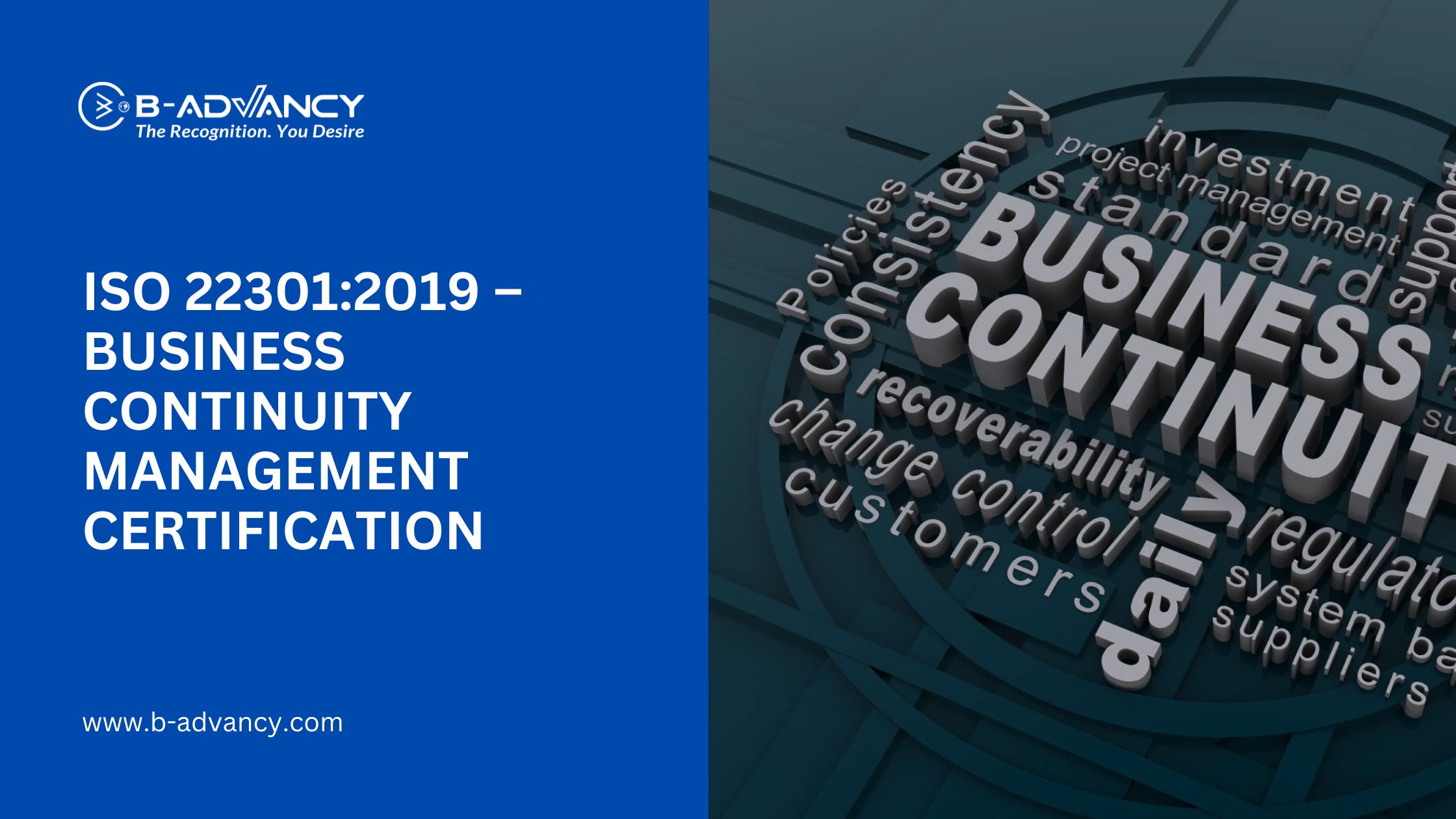
In today’s volatile global business environment, organizations face a wide array of threats—from natural disasters and cyberattacks to supply chain disruptions and pandemics. Business interruptions are no longer a matter of “if,” but “when.” The key differentiator lies in how prepared a business is to continue operations when the unexpected strikes.
This is where ISO 22301:2019, the international standard for Business Continuity Management Systems (BCMS), becomes a vital asset. It offers a structured framework to identify potential threats, assess risks, and implement preventive and recovery strategies to ensure uninterrupted delivery of products and services.
ISO 22301:2019 is the internationally recognized standard for Business Continuity Management. It outlines the requirements for establishing, implementing, maintaining, and continually improving a BCMS.
The standard enables organizations to:
Protect against disruptive incidents
Minimize the impact of such events
Ensure rapid recovery of operations
The 2019 version of the standard replaces the original 2012 edition, with a clearer emphasis on performance-based approaches, leadership involvement, risk assessment alignment, and integration with other ISO management systems like ISO 9001, ISO 27001, or ISO 45001.
Whether it's a cyberattack, flood, supply chain crisis, or political unrest, disruptions can cripple businesses. Without a tested continuity plan, companies can lose revenue, clients, data, and reputation within hours. ISO 22301 provides a resilience strategy to ensure business continuity even under extreme pressure.
Clients, partners, and regulators now demand assurance that organizations can operate during emergencies. ISO 22301 certification offers evidence of preparedness, giving businesses a competitive advantage in tenders, partnerships, and audits.
A well-prepared organization inspires trust and confidence. Employees know their safety and roles are accounted for, customers receive continued service, and investors see risk-managed governance.
Any organization—regardless of size, sector, or geography—can benefit from ISO 22301 certification. However, it is particularly valuable for:
Banks and financial institutions
IT and data service providers
Healthcare and hospitals
Government and public agencies
Telecom operators
Manufacturers with complex supply chains
Educational institutions and NGOs
Retail and e-commerce platforms
In Bangladesh, sectors like garments, fintech, pharmaceuticals, logistics, and export houses are increasingly adopting ISO 22301 to meet global client expectations and regulatory compliance.
Build a resilient organization that can adapt and respond to unexpected situations while continuing to meet customer expectations.
Helps comply with disaster recovery, data protection, and industry-specific requirements. It’s especially valuable for complying with government mandates or global client policies.
Certification demonstrates a commitment to reliability, boosting customer trust and increasing opportunities for global contracts.
Stand out in the marketplace, especially when bidding for public tenders, donor projects, or large international clients who require continuity assurances.
Encourages better documentation, role clarity, and crisis team preparedness, leading to fewer operational losses during disruptions.
Easily integrates with other standards like ISO 9001 (Quality), ISO 27001 (Information Security), and ISO 45001 (Occupational Health & Safety) for a unified management approach.
Context of the Organization
Identify internal and external factors affecting your ability to deliver critical services.
Leadership Commitment
Top management must lead the continuity efforts with proper roles, policies, and accountability.
Risk and Business Impact Assessment (BIA)
Determine key risks and assess the potential impact of disruptions.
Business Continuity Strategies and Plans
Develop proactive measures and response plans for identified threats.
Testing and Exercises
Regular drills, simulations, and updates to ensure plans are effective and practical.
Communication and Awareness
Clear roles, responsibilities, and stakeholder communication during crises.
Monitoring, Review, and Continual Improvement
Use audits and reviews to evaluate and improve the BCMS.
Step 1: Gap Analysis
Evaluate your current systems against ISO 22301 requirements.
Step 2: Management Buy-in
Ensure leadership support and resource allocation.
Step 3: Risk & Impact Assessment
Conduct BIA and risk evaluation to determine critical business functions and vulnerabilities.
Step 4: Develop Continuity Plans
Create incident response, communication, and recovery plans.
Step 5: Training & Awareness
Train staff on roles and response actions during disruptions.
Step 6: Conduct Internal Audits
Check compliance and fix any gaps before the external audit.
Step 7: Certification Audit
Engage an accredited certification body like B-ADVANCY Certification Limited to evaluate and certify your BCMS.
Bangladesh is a climate-vulnerable country, exposed to floods, cyclones, and other natural disasters. At the same time, the economy is growing rapidly in sectors like RMG, finance, logistics, digital services, and healthcare.
A disaster or cyberattack can shut down a company’s operations overnight. Implementing ISO 22301 ensures organizations have risk-based business continuity frameworks that enable them to recover quickly and protect stakeholders.
Additionally, as global buyers demand compliance and resilience, this standard positions Bangladeshi exporters and service providers as trusted, stable partners.
Organizations like B-ADVANCY Certification Limited provide:
Gap assessments
Documentation support
Business continuity training
Internal audit guidance
Final certification
For businesses in Bangladesh, working with a local ISO certification body provides the advantage of regional knowledge, faster support, and tailored solutions based on local risk contexts.
The post-pandemic world has taught us that resilience is non-negotiable. Organizations that build their foundations on continuity, adaptability, and proactive risk planning are not only better prepared for disasters—they are more profitable, agile, and trusted.
Implementing ISO 22301:2019 is a strategic investment in your future. It’s about protecting your people, your customers, your operations—and most importantly—your reputation.
If your organization is serious about growth, stability, and risk management, now is the time to act.